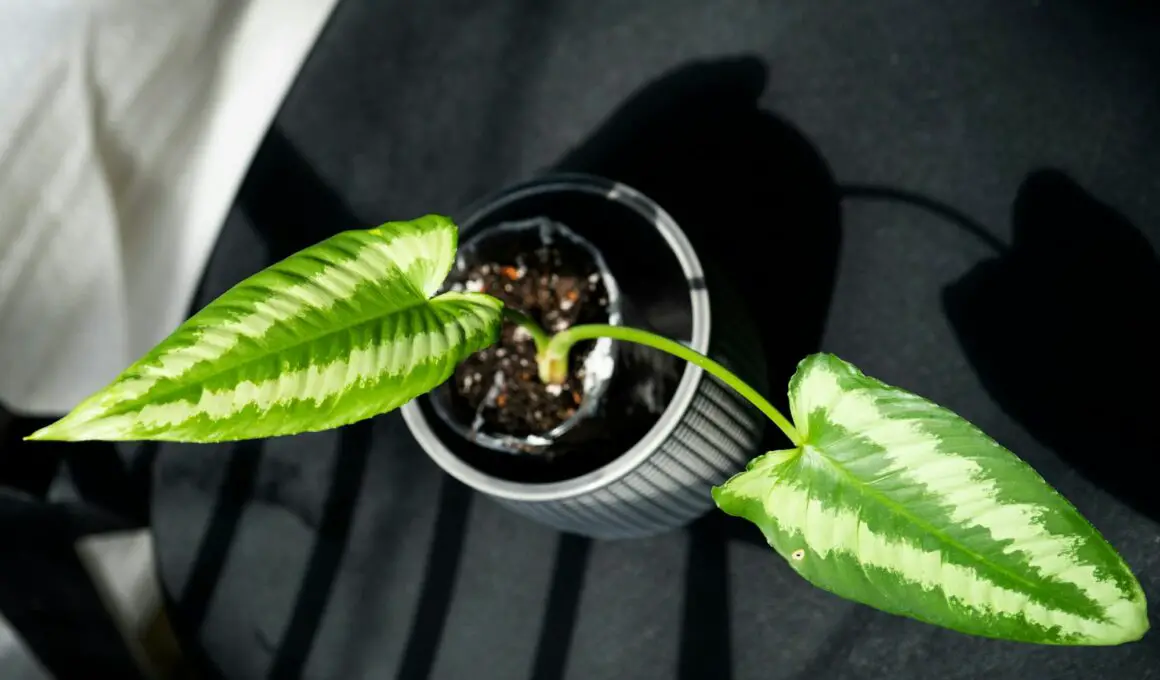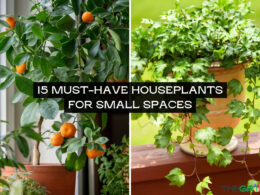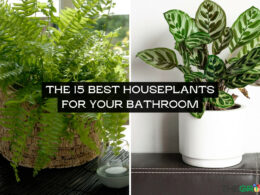In This Article Show
Growing rare and exotic houseplants has become more than just a trend; it’s a delightful way to bring a piece of the natural world into our homes. These plants not only serve as captivating visual elements with their unusual shapes and vibrant colors, but they also contribute to the air quality, making our indoor environments healthier and more inviting.
However, venturing into the world of uncommon houseplants can sometimes feel like navigating a labyrinth, especially with their distinct care requirements. Fear not, as I’m here to guide you through this journey. Whether you’re a seasoned gardener or new to the green-thumb community, this guide is designed to help you understand what makes these plants so special and how to care for them to ensure they thrive in your care.
From the lush, tropical allure of the Mini Monstera to the striking visual impact of the Corpse Flower, each plant on this list has been selected for its unique beauty and intriguing characteristics. So, whether you’re looking to add a splash of color to your room with the Pink Princess or bring a touch of the desert into your home with the Star Cactus, there’s something here for everyone.
Tropical Marvels
Let’s explore together how these rare gems can elevate our home decor and bring a sense of the exotic into our daily lives, all while keeping things simple and accessible for everyone. Ready to expand your plant collection with some of the most extraordinary specimens from around the world?
1. Mini Monstera (Rhaphidophora tetrasperma)
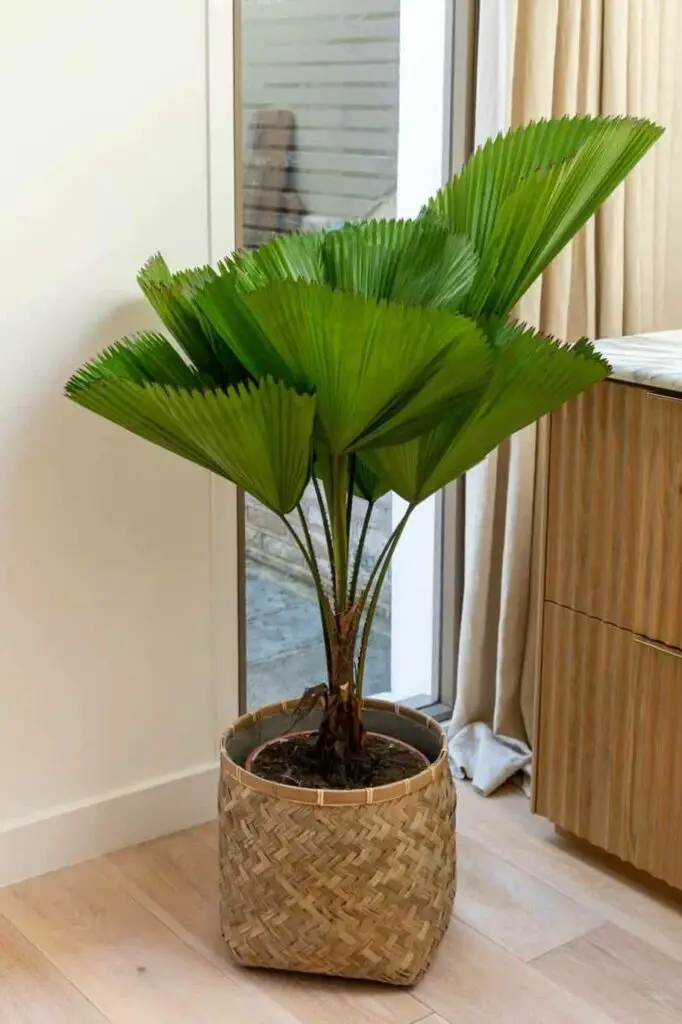
Native to Thailand and Malaysia, the Rhaphidophora Tetrasperma is a tropical plant that thrives in warm, humid conditions, similar to those of its native habitat. Despite its common name, it’s not a true Monstera but shares some visual similarities.
This plant is beloved for its distinctive split leaves, which resemble those of the Monstera Deliciosa, albeit on a smaller scale. Its rapid growth and vining nature make it a perfect candidate for hanging baskets or climbing frames.
Get Gardening For Beginners
Our new EBOOK shows newcomers and green thumbs alike a step by step guide to growing the garden of their dreams.
2. The Royalty Among Philodendrons (Philodendron Pink Princess)
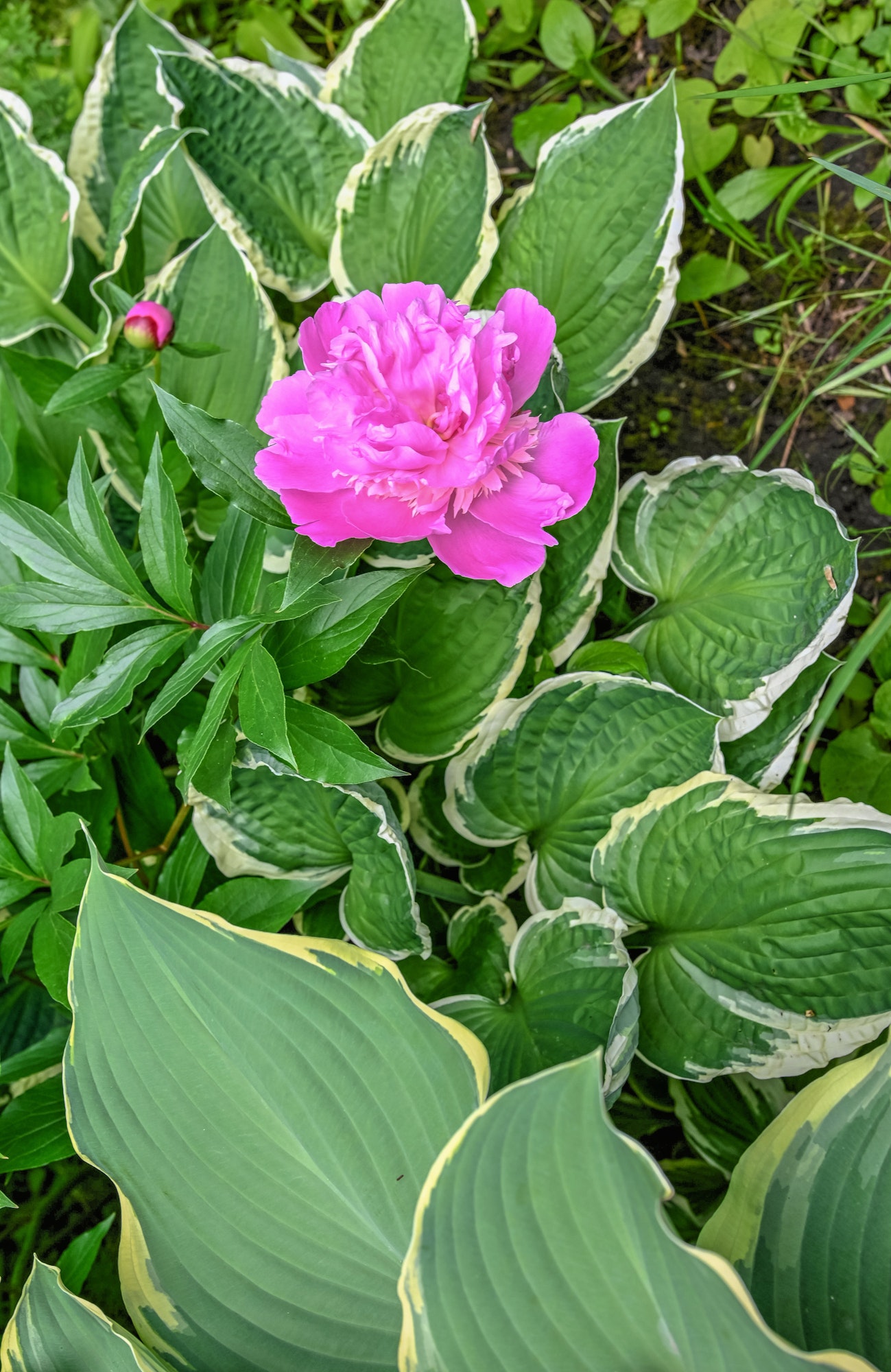
The Philodendron Pink Princess is a highly coveted plant due to its striking pink variegation. Each leaf is unique, with splashes of pink, burgundy, and green, making it a standout addition to any collection. Variegated plants often require more light than their fully green counterparts to maintain their unique coloring, and the Pink Princess is no exception.
Place it in a location with bright, indirect sunlight. Water when the top couple of inches of soil are dry, and be cautious not to overwater, as this can lead to root rot. A well-draining soil mix and occasional feeding during the growing season will help keep your Pink Princess thriving.
3. Velvet Cardboard Anthurium (Anthurium Clarinervium)

The Anthurium Clarinervium, known for its heart-shaped, velvety leaves and striking white venation, is a true spectacle. Its leaves are thick and leather-like, earning it the nickname “Velvet Cardboard Anthurium.”
This Anthurium’s appeal lies not just in its dramatic foliage but also in its rarity and the texture of its leaves, which feel as luxurious as they look.
Desert Jewels
4. Living Rocks (Ariocarpus Trigonus)
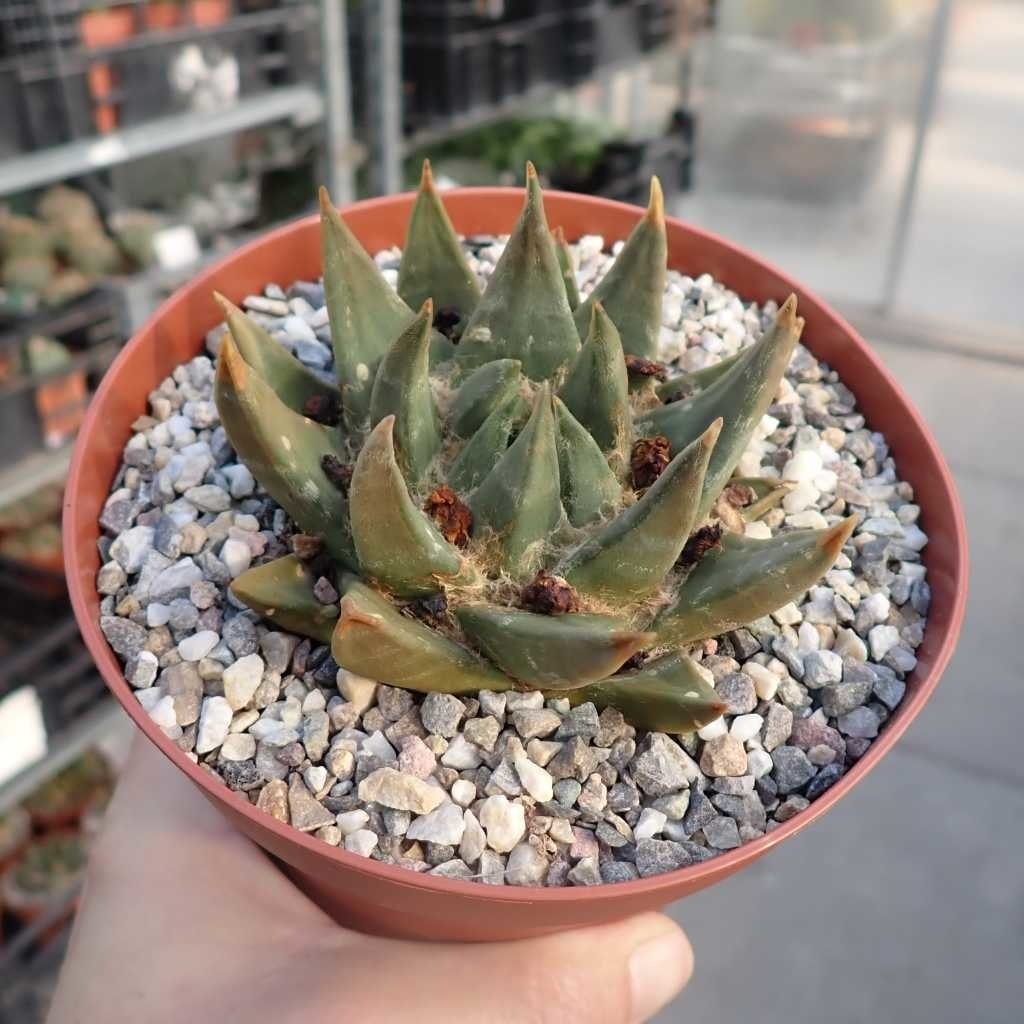
The Ariocarpus Trigonus is a fascinating succulent that blends into its surroundings with a rock-like appearance. Its slow growth and rough, textured surface make it a unique specimen in any collection.
Native to the desert regions of Mexico, this plant thrives in full sun with minimal water.
A well-draining soil mix is crucial to prevent root rot, and it requires very little maintenance, making it perfect for those who love plants but have a busy schedule.
5. Star Cactus (Astrophytum Asterias)

Also known as the Sea Urchin Cactus, Astrophytum Asterias is prized for its spherical, ribbed shape and its rare, striking blooms that appear in the summer. Its rarity comes from its slow growth rate and the specific conditions needed for it to bloom.
Get Gardening For Beginners
Our new EBOOK shows newcomers and green thumbs alike a step by step guide to growing the garden of their dreams.
This cactus prefers bright light and occasional watering, with a dry period in winter to encourage blooming. Its minimalistic needs make it an ideal choice for desert plant enthusiasts.
Unusual Climbers and Crawlers
6. Monstera Obliqua (The Swiss Cheese Plant)
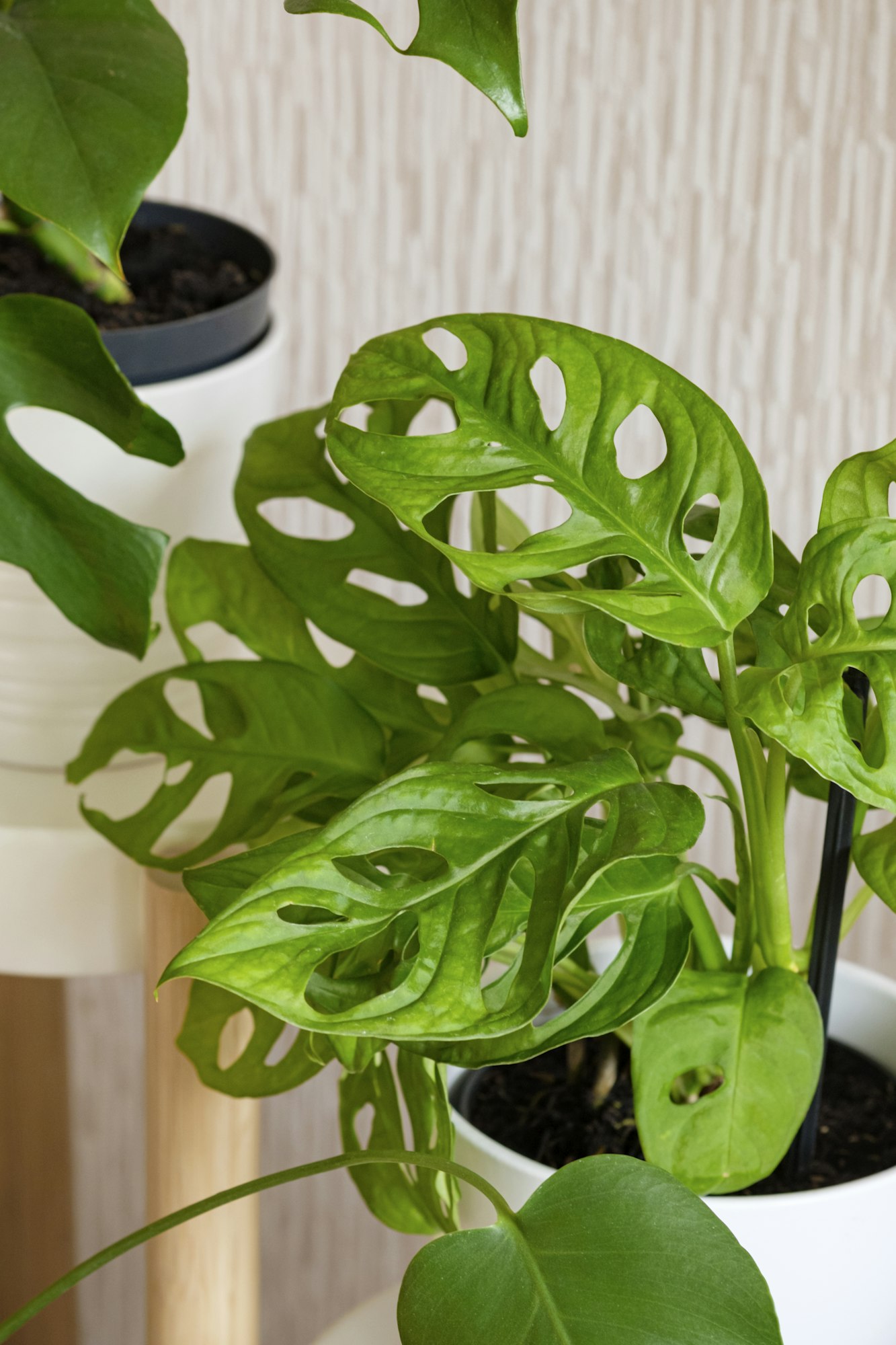
Though often confused with its cousin, the Deliciosa, the Obliqua is much rarer and is characterized by its significantly more perforated leaves. It loves high humidity, indirect light, and sturdy support to climb on. Keeping the soil consistently moist and providing regular misting will mimic its natural rainforest habitat.
7. Hindu Rope Plant (Hoya Carnosa Compacta)

With its twisted, rope-like vines and clusters of star-shaped, pink flowers, this Hoya is a visual delight.
It prefers bright, indirect light and well-draining soil. Water when the topsoil has dried out completely. Patience is key, as it’s a slow grower but well worth the wait for its stunning blooms.
Colorful Foliage to Adorn Your Home
8. The Living Plant (Calathea Orbifolia)
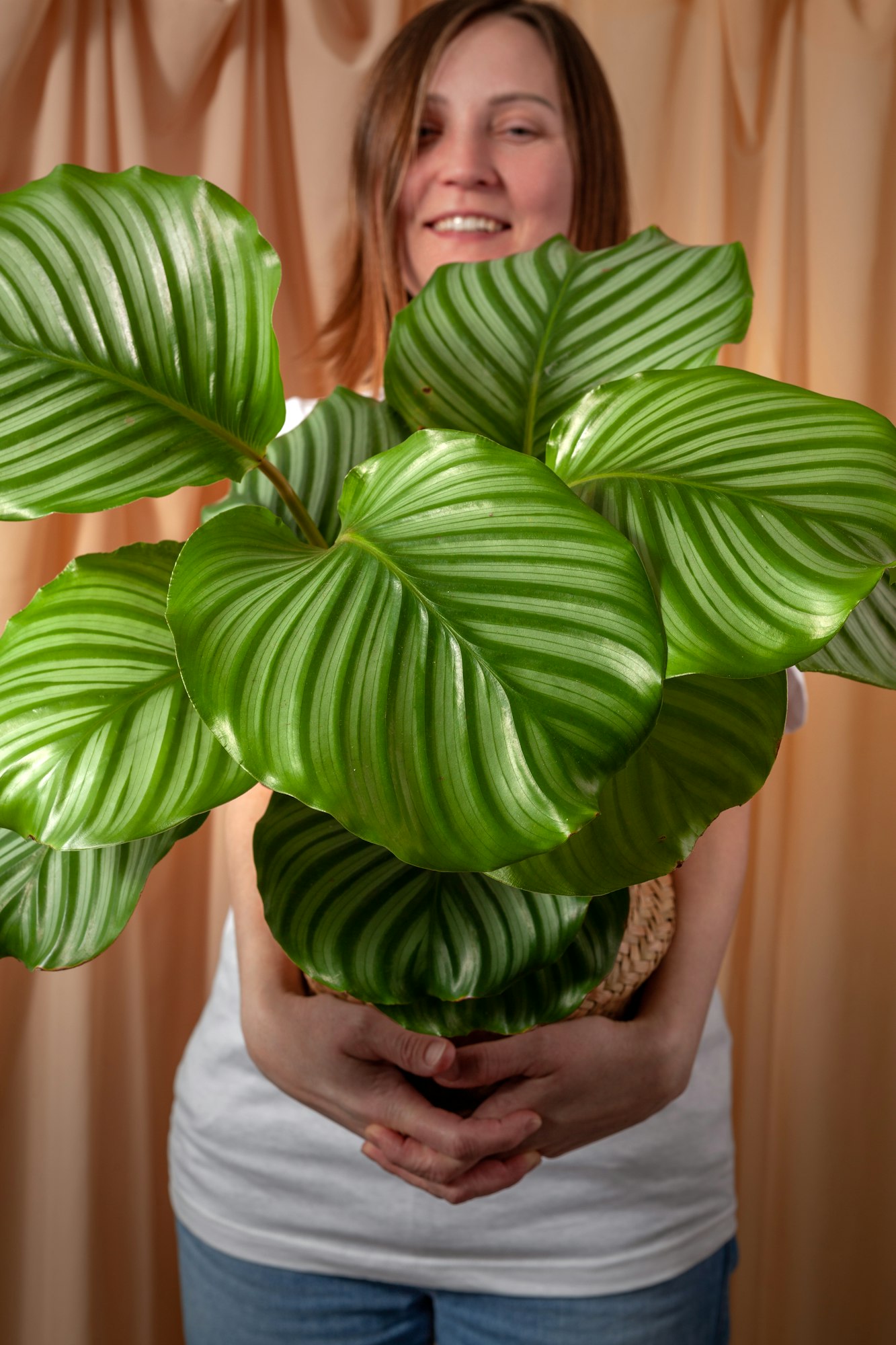
Keep the soil consistently moist but not soggy, and provide high humidity and indirect light. Known for its nyctinastic movements, the leaves move up at night and lower during the day, a response to light changes, making it seem as if it’s “living.”
9. Camouflage Plant (Aglaonema Pictum Tricolor)

Thrives in low light and needs moderate watering, allowing the soil to dry slightly between waterings. Its camouflaged, variegated leaves with shades of green, gray, and cream make it a stunning addition to any indoor space.
Exotic Orchids and Bromeliads
10. Gold of Kinabalu Orchid (Paphiopedilum rothschildianum)
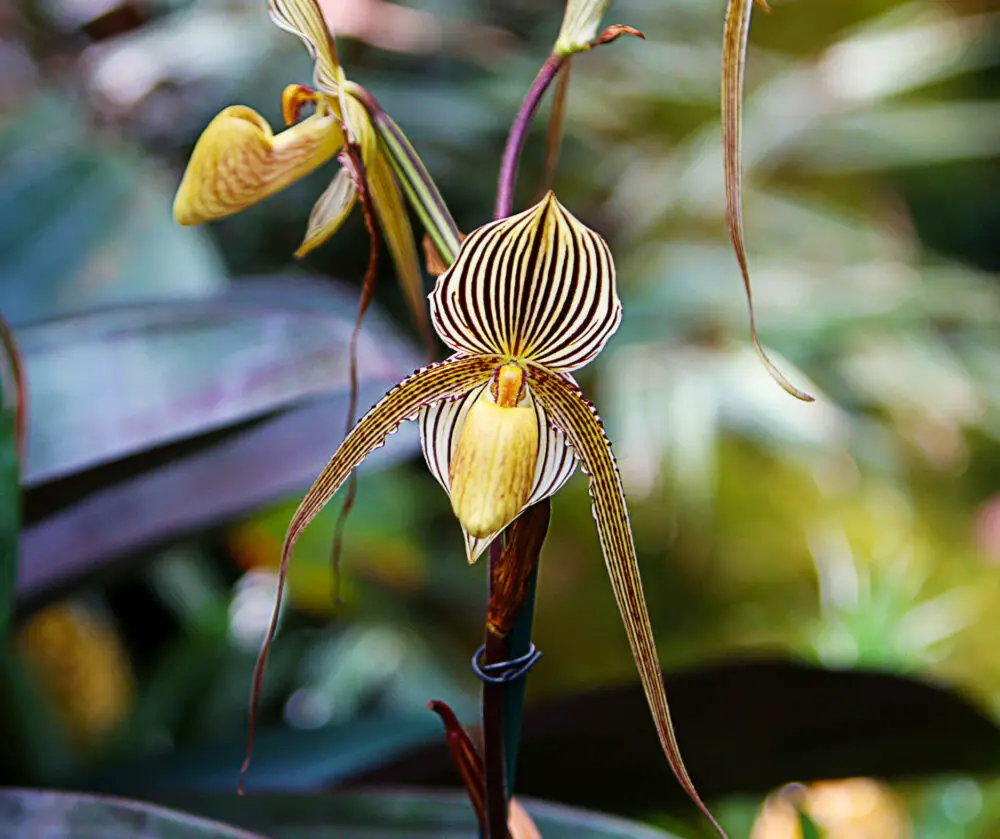
Found only in Kinabalu Park in Malaysia, this orchid is rare and highly prized for its striking appearance.
Requires high humidity, indirect light, and a well-draining medium, making it a challenge but a rewarding one for orchid enthusiasts.
11. The King of Air Plants (Tillandsia Xerographica)

This air plant thrives without soil, absorbing moisture and nutrients through its leaves. Mist several times a week and provide bright, indirect light. Its large size and silver, curling leaves make it a standout among air plants, capable of producing a spectacular red and yellow bloom.
Rare Succulents and Cacti
12. Living Pebbles (Conophytum Calculus)
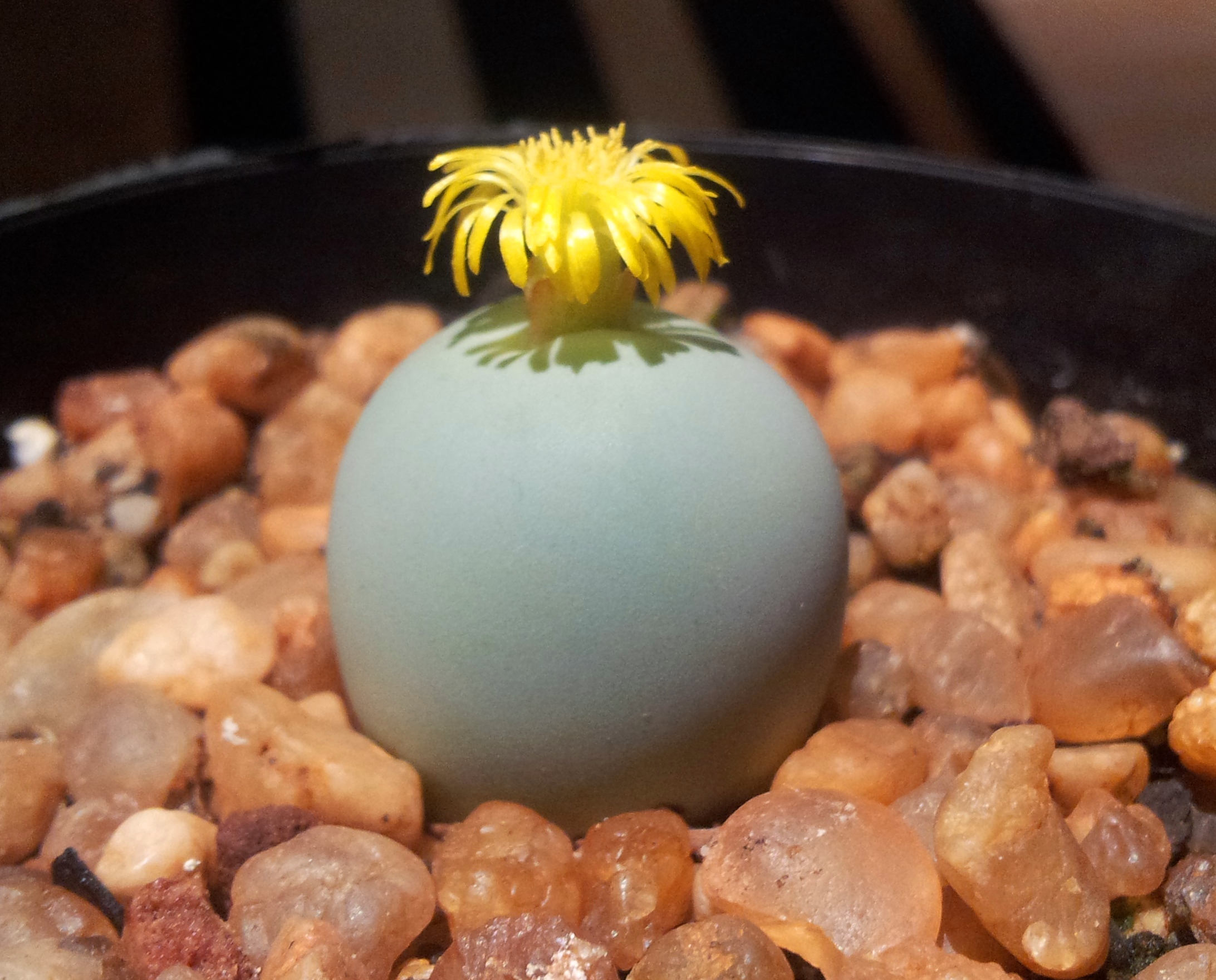
These succulents thrive in conditions that mimic their native South African desert habitats—bright light, sparse watering, and well-draining soil. Water sparingly, allowing the soil to completely dry out between waterings, especially during their dormant summer period.
Their resemblance to small pebbles helps them blend into their surroundings to avoid being eaten by thirsty animals. This camouflage, combined with their surprising variety of shapes and colors, makes them fascinating to collectors.
13. Baseball Plant (Euphorbia obesa)
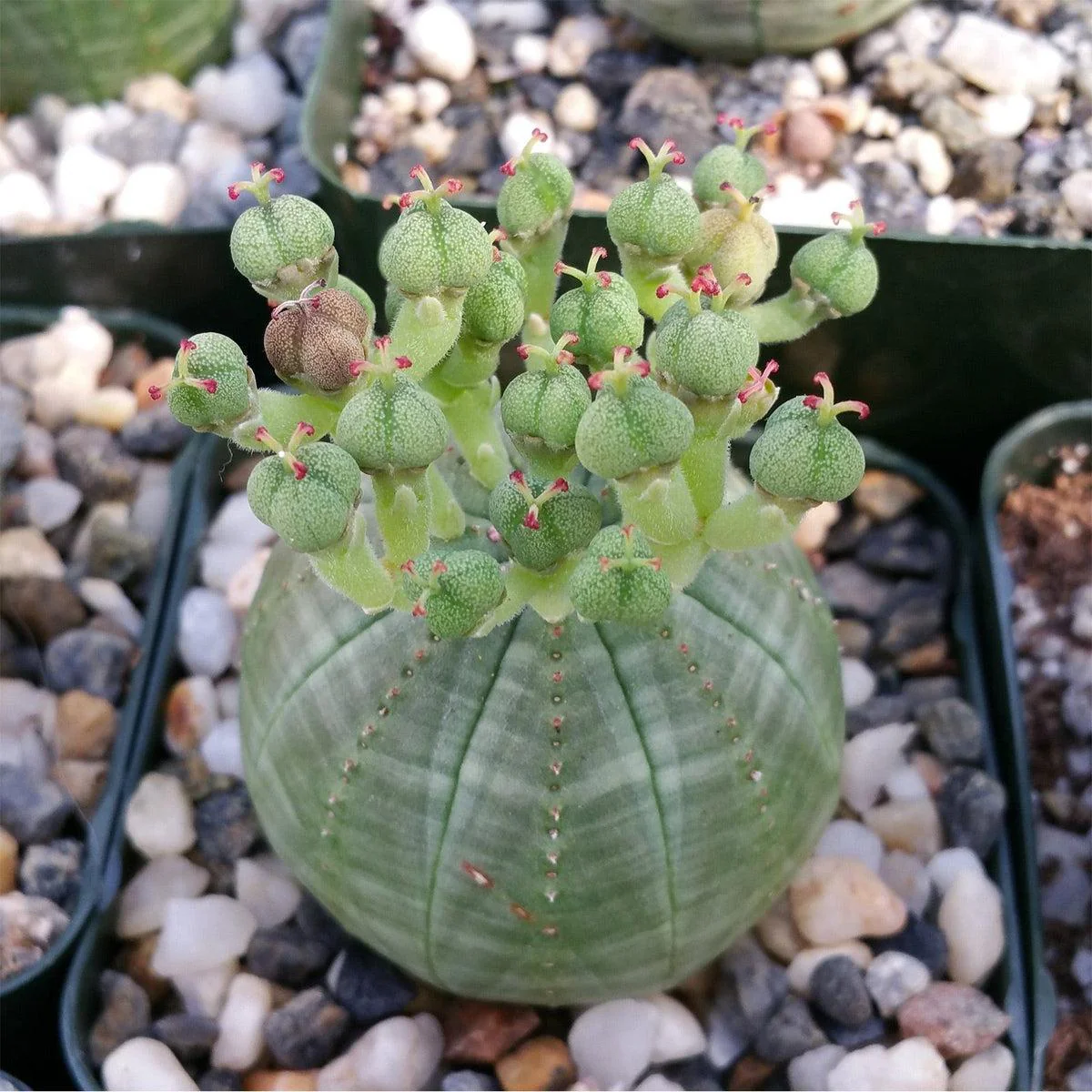
The Baseball Plant requires a sunny spot and minimal water, making it an easy-care choice for busy plant lovers. It’s crucial to avoid overwatering to prevent root rot. Its ball-shaped form and patterned skin make it a striking addition to any succulent collection. It can grow solitary for many years before producing small, inconspicuous flowers.
Unique Ferns and Palms
14. Aquatic Wonder (Blue Java Fern)
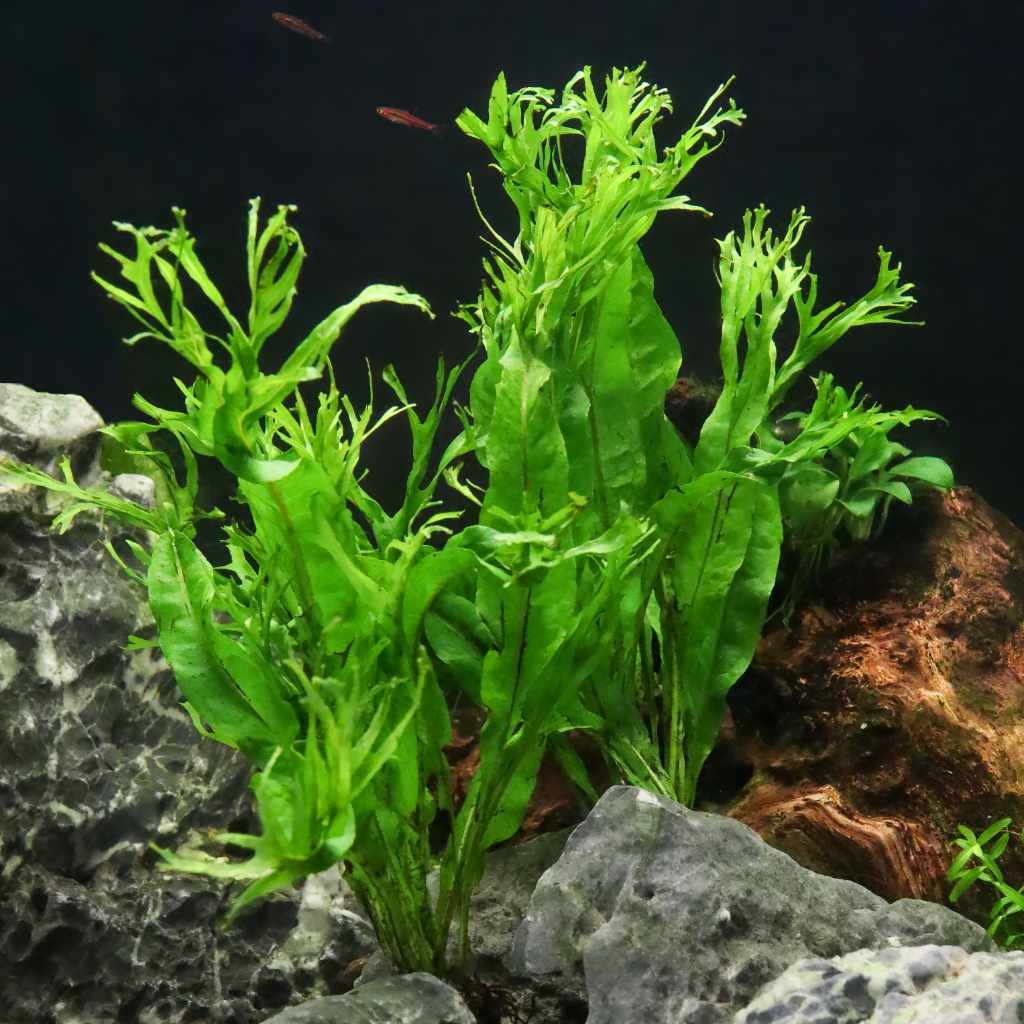
This aquatic fern is perfect for adding a lush, green touch to aquariums or terrariums. It attaches itself to rocks and wood, requiring no soil. It prefers low to moderate lighting and clean water, making it relatively easy to care for in a well-maintained aquarium. Its hardiness and unique coloration make it a favorite among aquatic plant enthusiasts.
15. The Ruffled Fan Palm (Licuala Grandis)
This palm loves a warm, humid environment with bright, indirect light. It’s a slow grower that eventually forms a stunning fan of large, pleated leaves. The large, circular leaves with a ruffled edge give this palm an elegant appearance, making it a luxurious addition to indoor spaces.
Aromatic and Edible Exotics
16. Vanilla Orchid (Vanilla Planifolia)
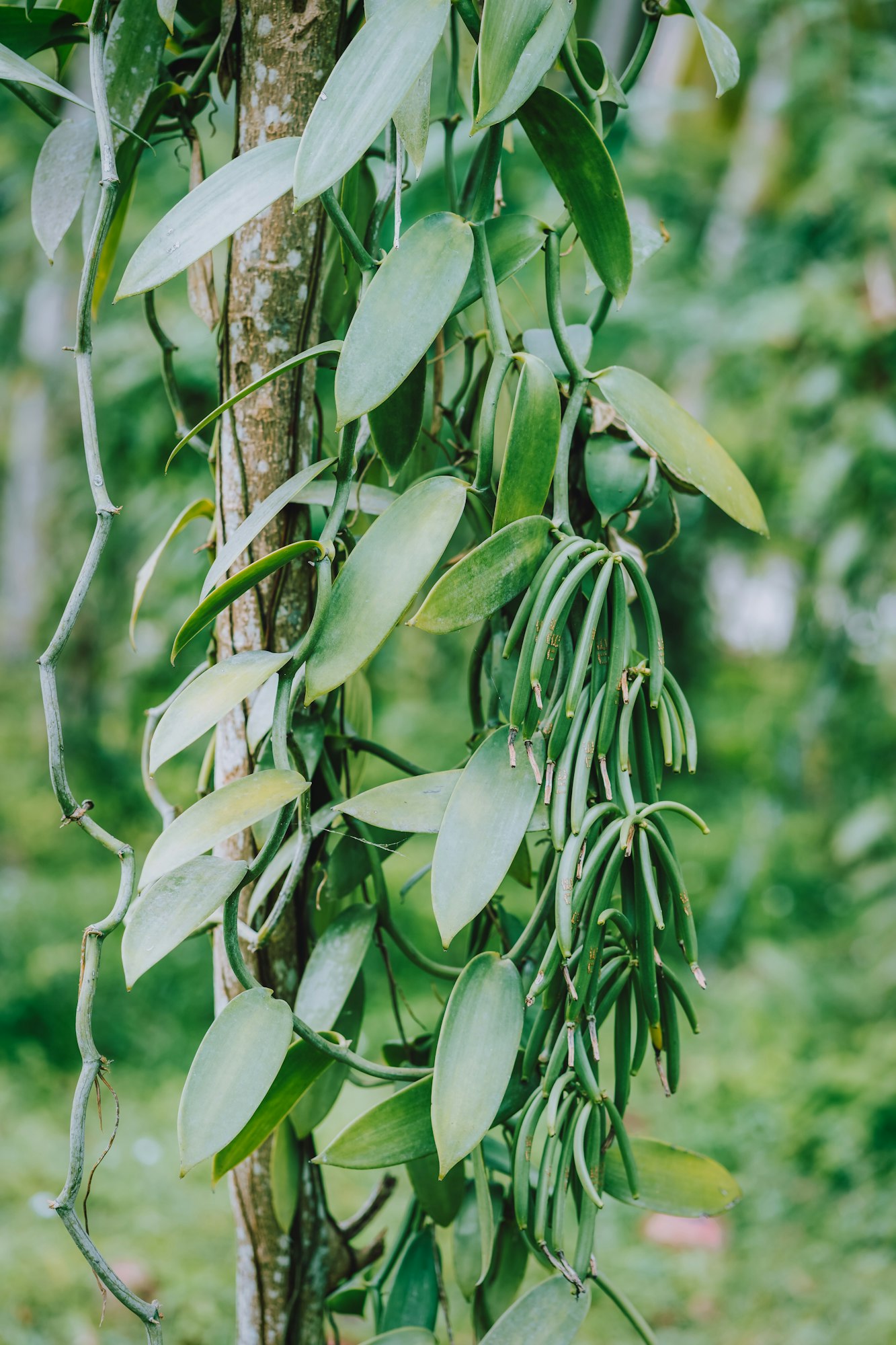
Growing Vanilla Planifolia requires patience, as it can take years for the first flowers to appear. It needs bright, indirect light, high humidity, and a sturdy support to climb. Pollinate flowers by hand to produce vanilla pods. Regular watering and high humidity are key, with less water required during the dormant winter months.
17. Black Pepper Plant (Piper Nigrum)
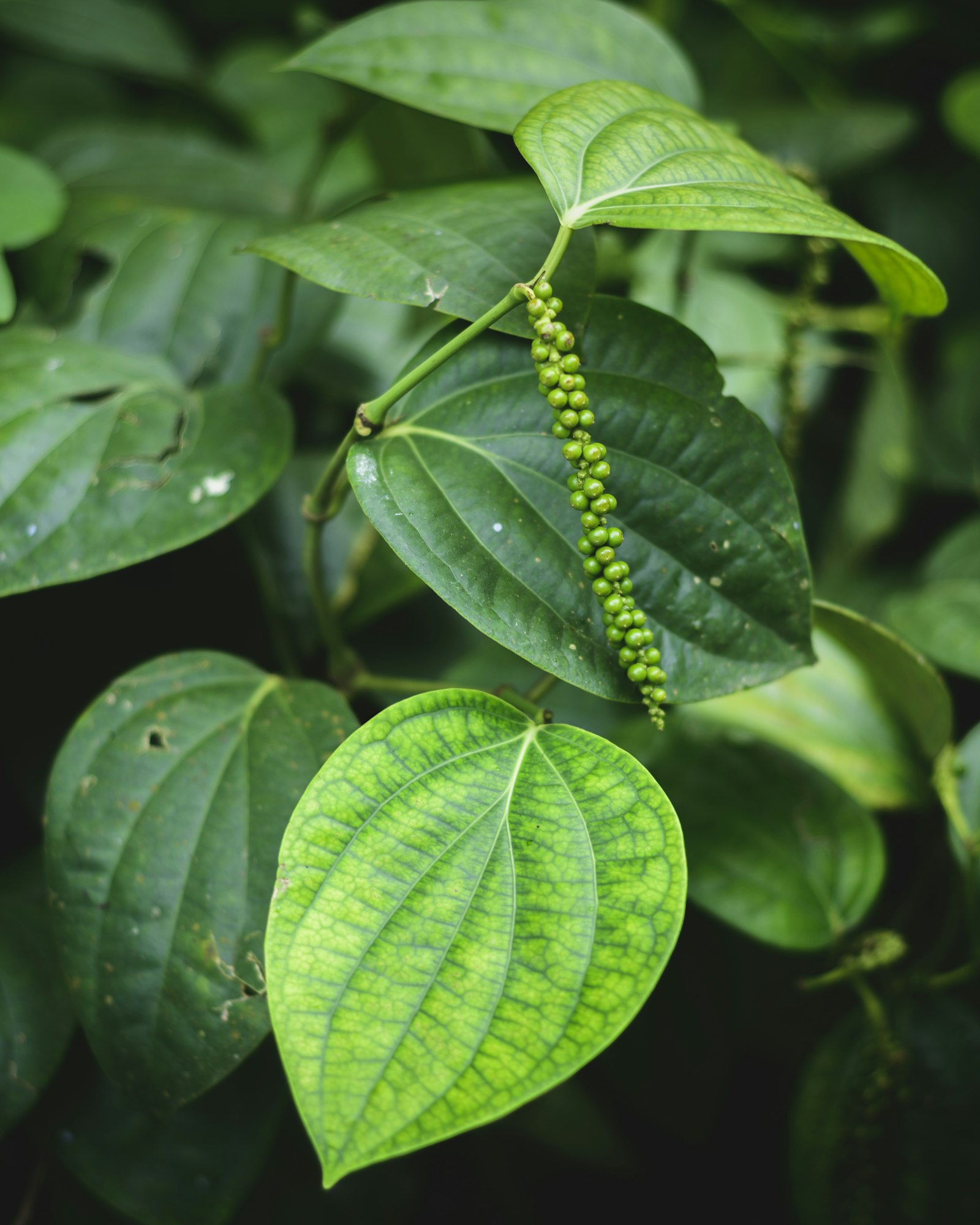
This tropical plant prefers warm temperatures and partial shade. It requires a lot of humidity and rich, well-draining soil to flourish. The plant produces clusters of small green berries that turn red when ripe. Harvest these berries for fresh, homegrown black pepper.
Bizarre Beauties
18. Corpse Flower (Amorphophallus Titanum)
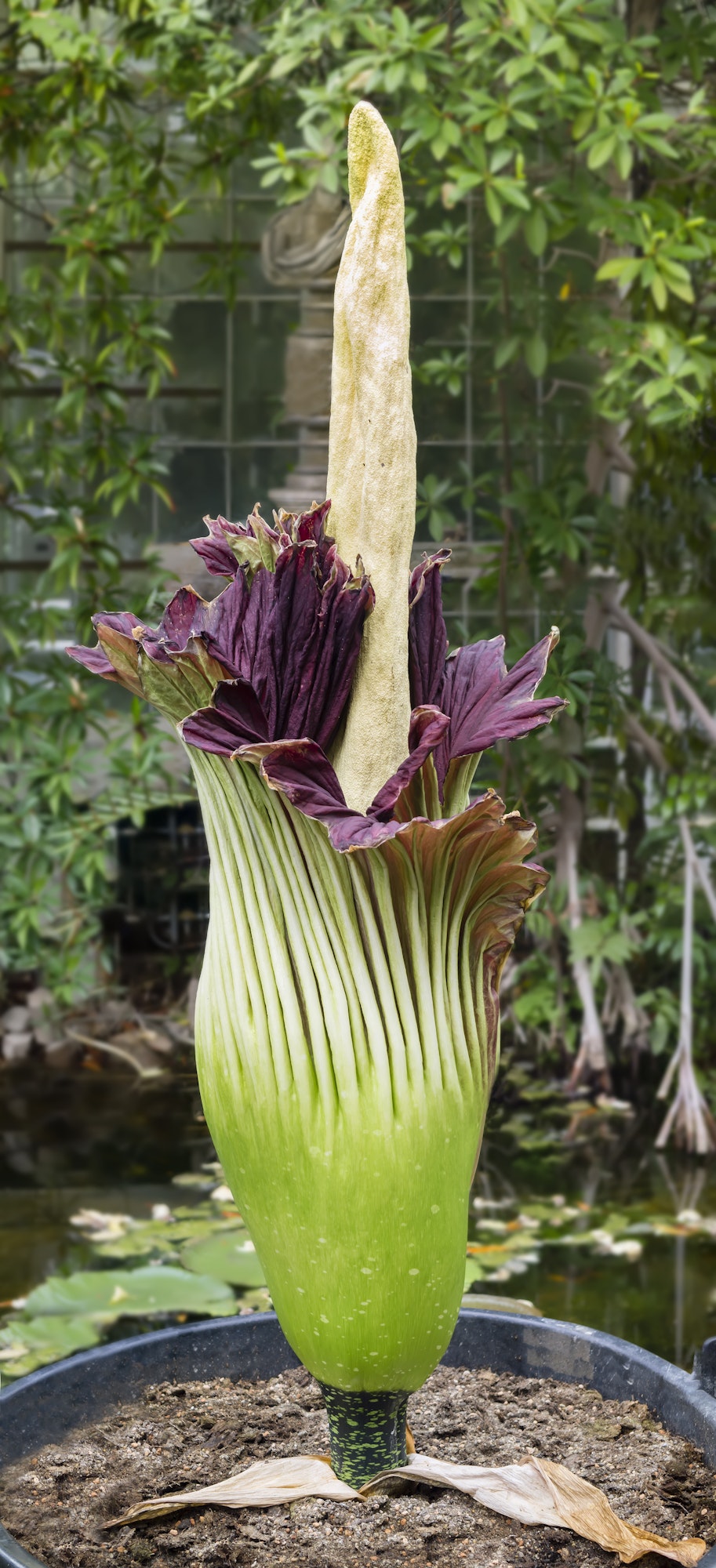
Known for its enormous flowering structure and distinctive odor of rotting flesh, the Corpse Flower is a rare and unusual spectacle. It blooms infrequently, making a blooming event a must-see. Requires a large growing space, consistent warmth, high humidity, and patience, as it can take years to bloom. The soil should be well-draining and rich in organic matter.
19. Succulent Shrub (Dorstenia Gigas)
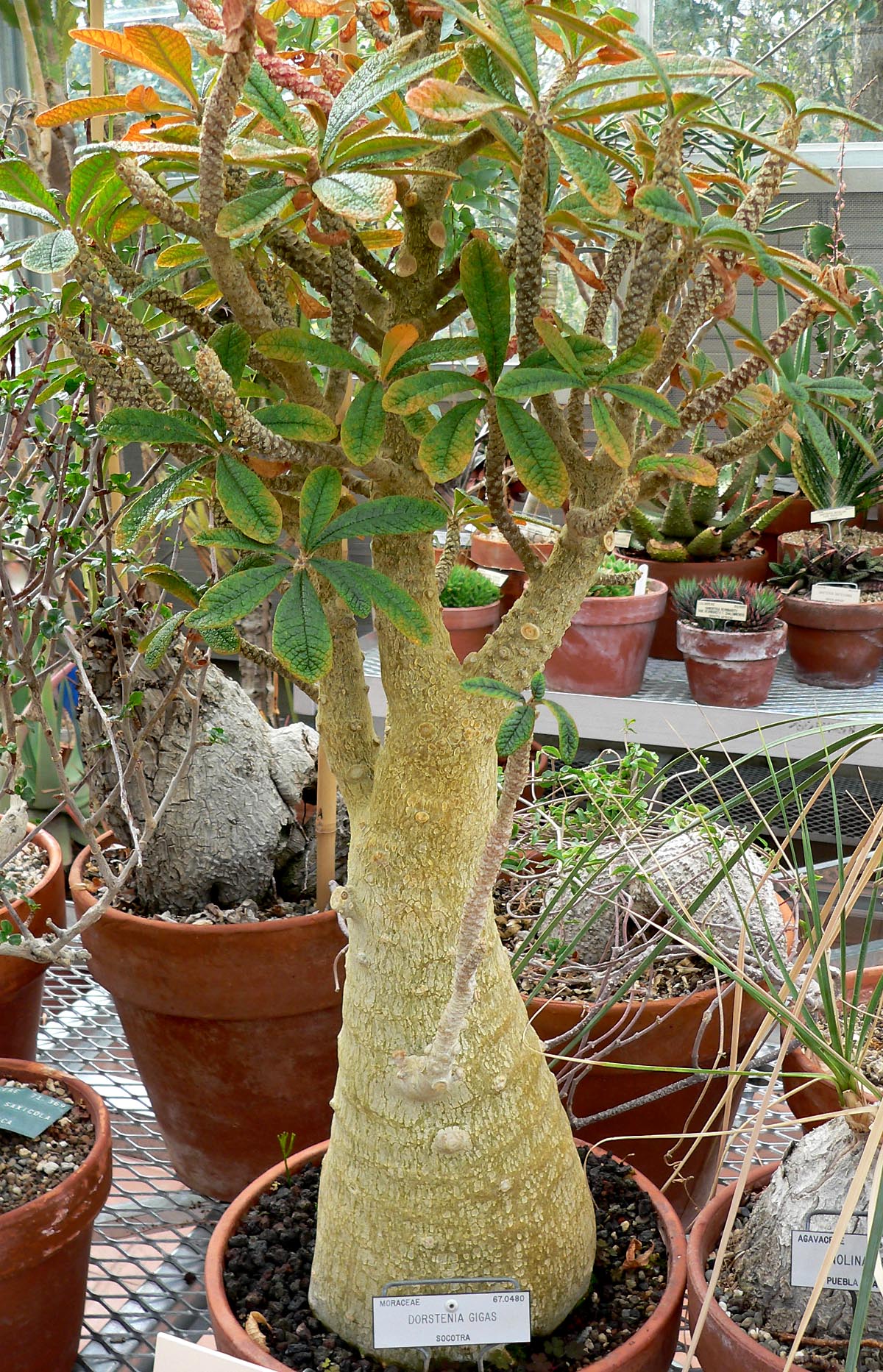
This unusual plant prefers bright, indirect light and a well-draining soil mix. Water moderately during the growing season and reduce watering in the winter. Its swollen, trunk-like base and branching structure topped with green, coin-shaped leaves make it a curious addition to any succulent collection.
Ethereal Blooms
20. Bat Flower (Tacca Chantrieri)
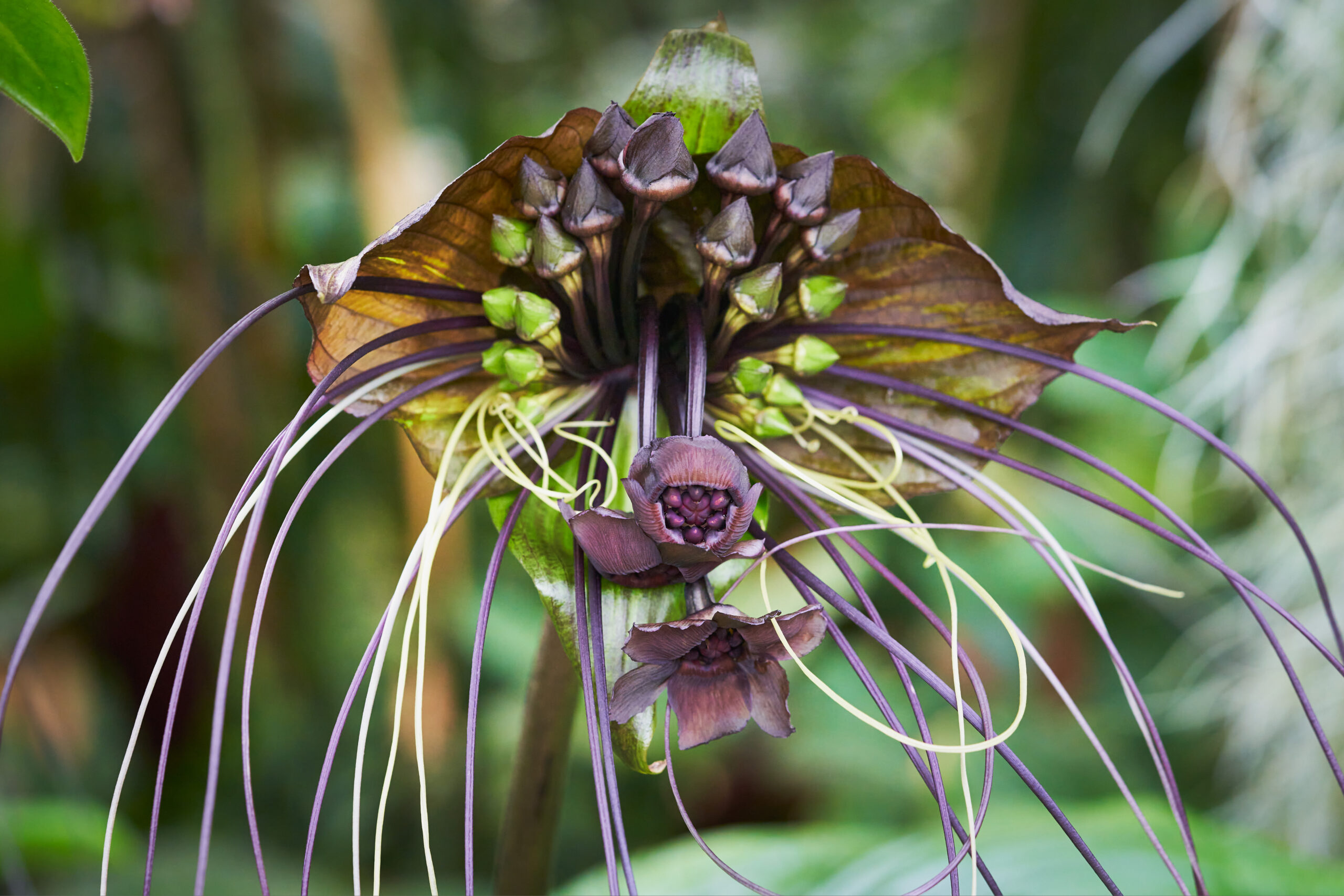
Prefers high humidity, warm temperatures, and indirect light. The soil should be kept consistently moist but not waterlogged. Its striking black flowers resemble a bat in flight, complete with long, dangling “whiskers.” A true conversation starter, it’s a must for collectors of unusual plants.
21. Ghost Orchid (Dendrophylax Lindenii)
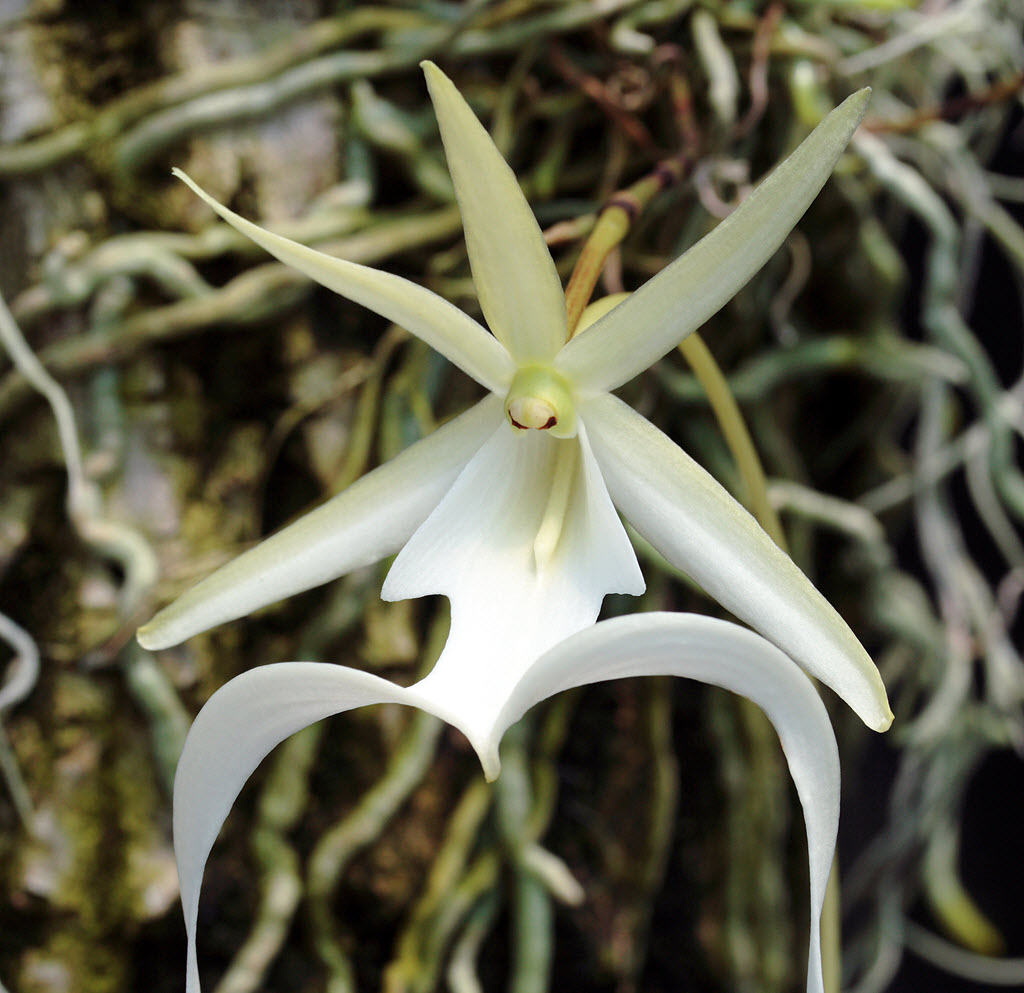
Thrives in high humidity and bright, indirect light. It’s an air plant, so it requires no soil, attaching itself to trees in its natural habitat. Known for its seemingly floating white flowers, the Ghost Orchid is a rare find, with a mystique enhanced by its elusive nature and stunning beauty.
Aquatic Exotics
22. Lace Plant (Aponogeton Madagascariensis)
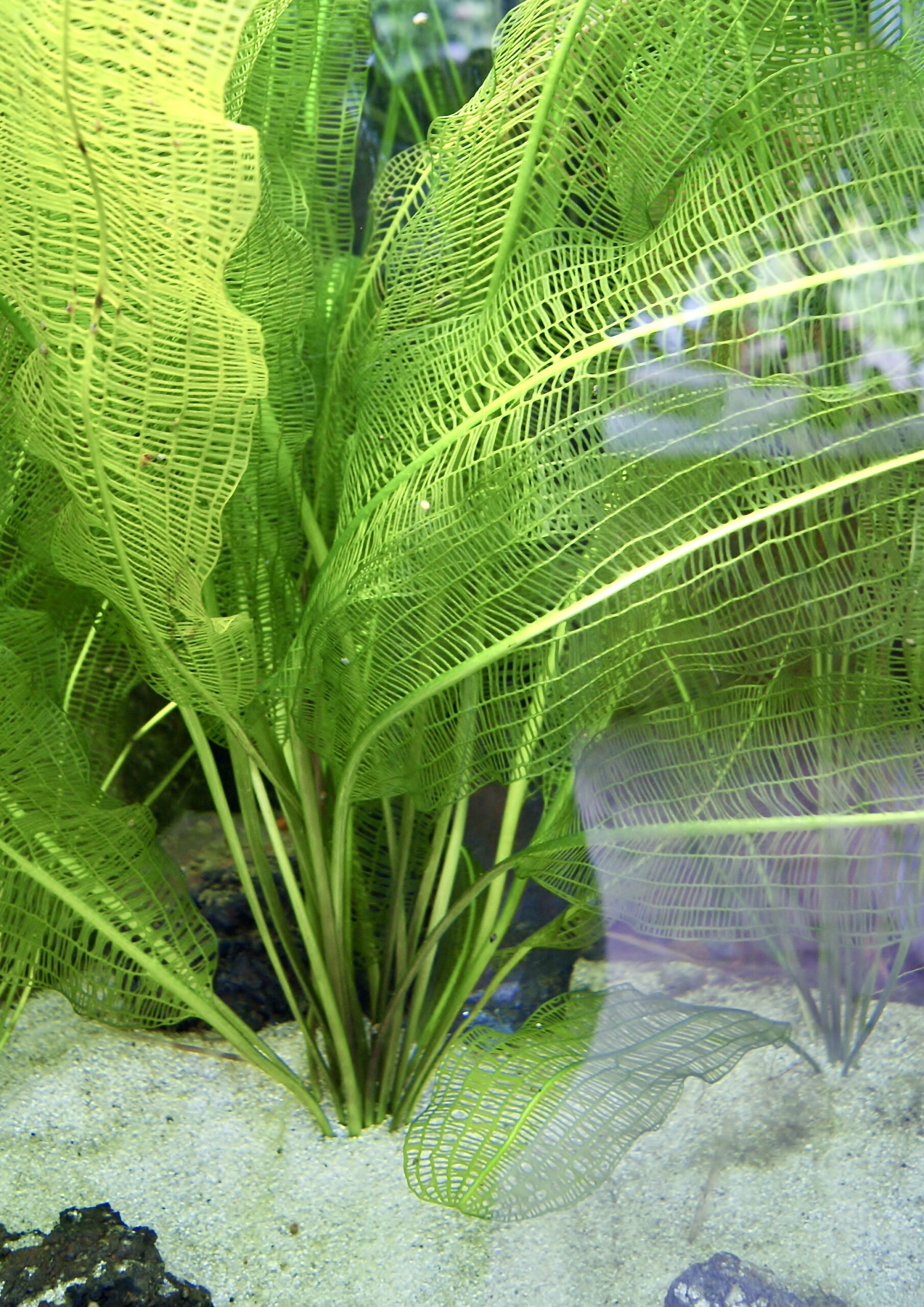
Prefers clean, slightly acidic to neutral water with moderate to high lighting conditions. It’s crucial to provide a rest period by lowering the water temperature and reducing light for a few months each year.
Regular feeding with aquatic plant fertilizer and CO2 supplementation can promote lush growth and frequent flowering. Its perforated, lace-like leaves are breathtaking in any aquarium, creating a delicate backdrop for fish and other aquatic plants.





